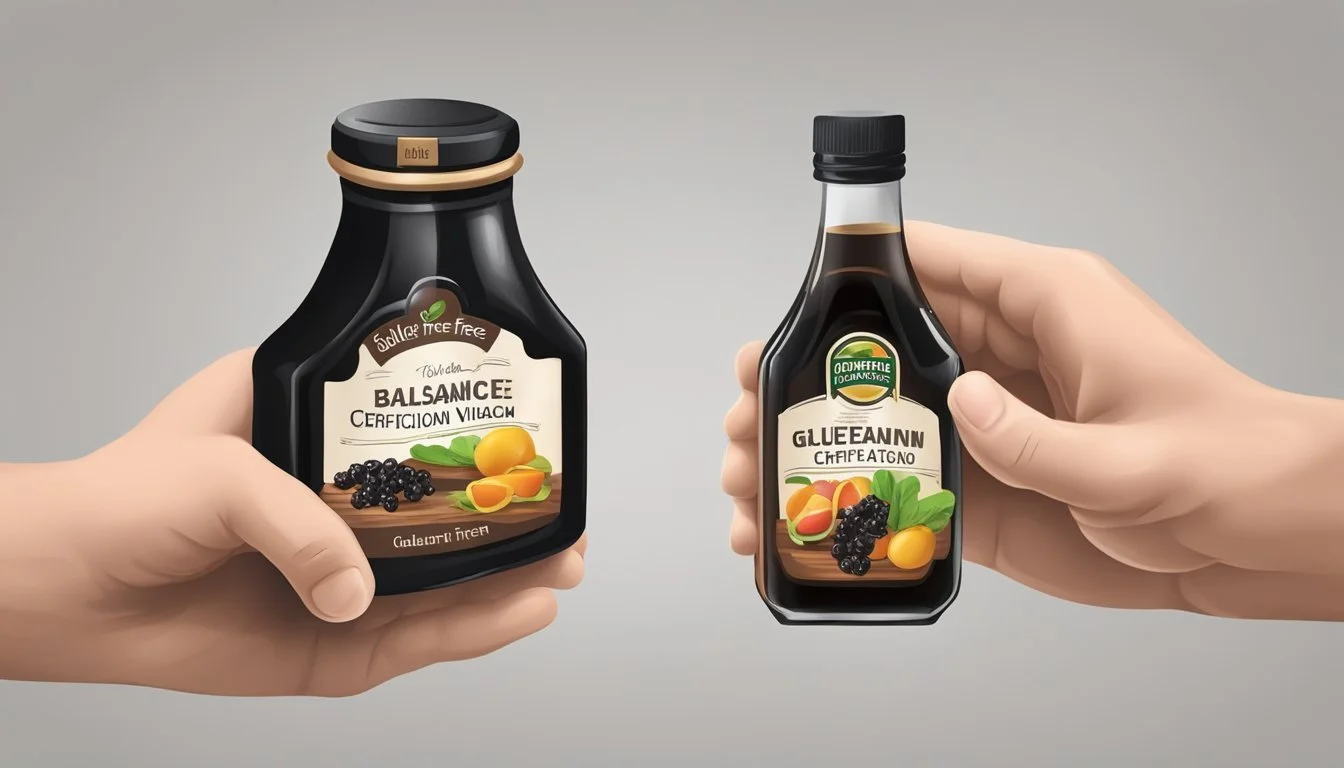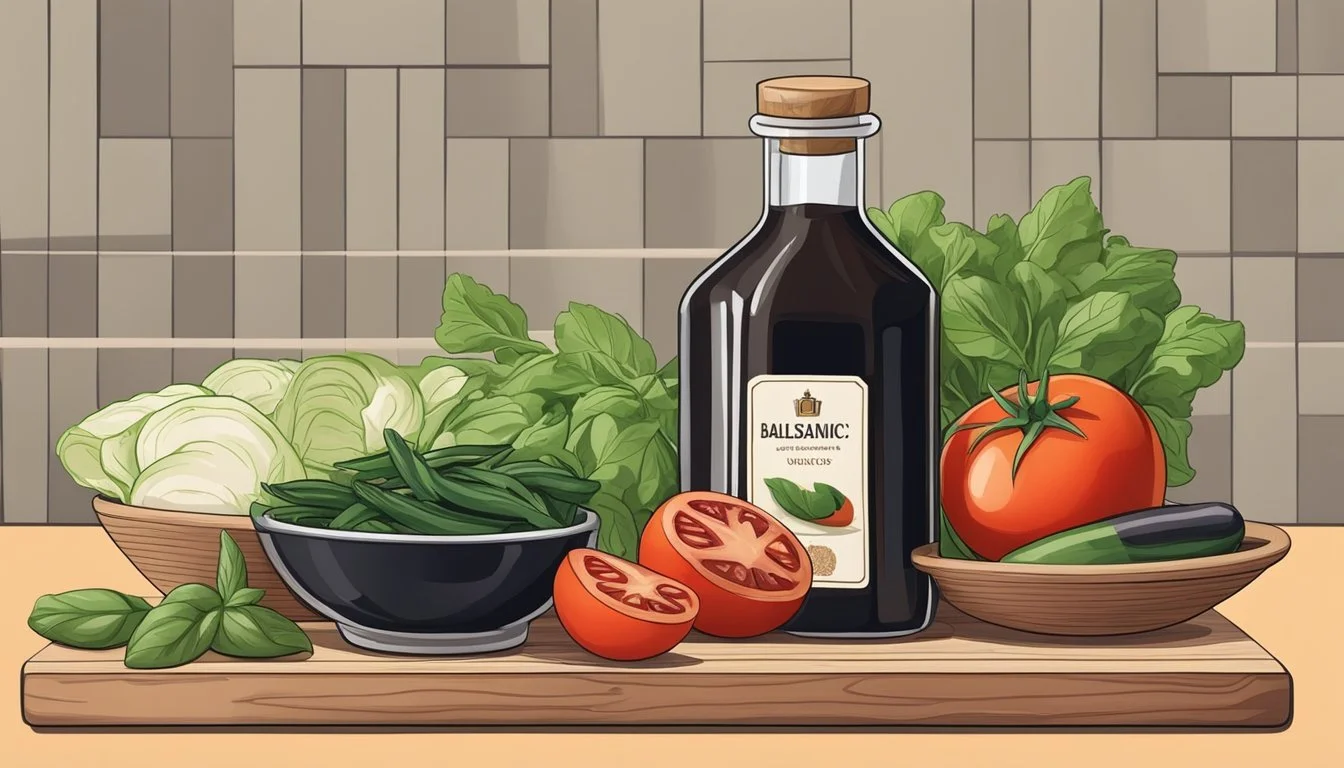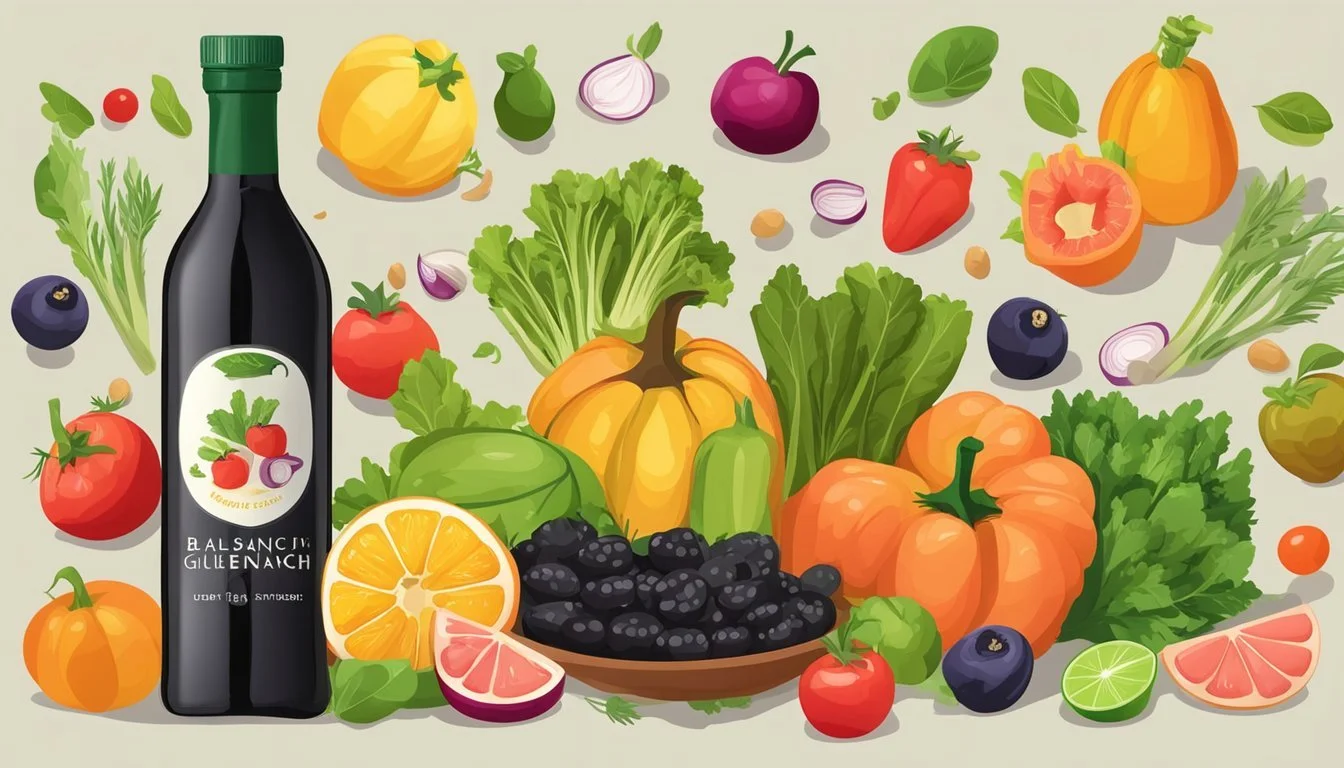Is Balsamic Vinegar Gluten-Free?
Understanding Its Ingredients and Production
Balsamic vinegar, celebrated for its rich flavor and velvety texture, is a staple in many kitchens and an essential ingredient in a variety of dishes. Originating from Italy, traditional balsamic vinegar is crafted from grape must, which is the freshly crushed grape juice that includes the skins, seeds, and stems. This type of vinegar is known for its complex production process, which involves aging in wooden casks, sometimes for decades. The purity of ingredients in traditional balsamic vinegar typically makes it safe for individuals with gluten sensitivities or celiac disease.
However, not all balsamic vinegars are created equal. The market also offers commercial-grade balsamic vinegars, which might contain additional ingredients and additives that could raise concerns about gluten content. With the rise of gluten-related health issues, consumers are becoming increasingly vigilant about the ingredients in their foods. It is essential to understand how balsamic vinegar is made and to recognize the distinction between traditional balsamic vinegar and its commercial counterparts to make informed dietary choices.
Individuals adhering to a gluten-free diet must scrutinize labels and may even consider contacting manufacturers to confirm the absence of gluten in their balsamic vinegar. While the likelihood of gluten presence in balsamic vinegar is generally low, especially in traditional varieties aged without the use of gluten-containing products, understanding the nuances of vinegar production can provide an extra layer of reassurance for those avoiding gluten in their diet.
What Is Balsamic Vinegar?
Balsamic Vinegar is a rich, complex condiment known for its sweet and tart flavor profile, traditionally crafted from grape must and meticulously aged.
Origins and Production
Balsamic vinegar originates from Italy, particularly in the regions of Modena and Reggio Emilia, with its production tracing back to the Middle Ages. It's made from grape must—the freshly crushed grape juice with all the skins, seeds, and stems—which is then fermented and aged under strict guidelines.
Types of Balsamic Vinegar
There are several types of balsamic vinegar, but the most recognized are Traditional Balsamic Vinegar and Balsamic Vinegar of Modena. Other commercial grades are also available, offering a more affordable option with varying levels of quality and aging.
Traditional Balsamic Vinegar
Traditional Balsamic Vinegar is considered the purest form and is aged for many years, often 12 or even 25 years, in wooden barrels. The aging process creates a rich, complex flavor, and as a result, this vinegar is the most expensive, reflecting the time and care invested in its production.
Balsamic Vinegar of Modena
Balsamic Vinegar of Modena is a commercial-grade product that also originates from Italy. It's aged for a minimum of two months, up to three years, combining wine vinegar with varying percentages of aged grape must. This blend offers a balance between the traditional flavor and accessibility.
Understanding Gluten
In this section, readers gain insights into what gluten is and how it affects individuals with celiac disease or gluten sensitivity.
What Is Gluten?
Gluten is a protein composite predominantly found in grains such as wheat, barley, and rye. It serves as a binder that gives bread and other baked goods their elastic structure and chewy texture. A variety of processed foods may contain gluten or gluten-containing ingredients, which are not always obvious and may require careful label scrutiny.
Celiac Disease and Gluten Sensitivity
Celiac disease is an autoimmune disorder where the ingestion of gluten leads to damage in the small intestine. Symptoms can range from gastrointestinal distress to neurological issues, and it requires a strictly gluten-free diet as management.
Gluten sensitivity, or non-celiac gluten sensitivity, is a condition wherein individuals experience symptoms similar to those of celiac disease but without the intestinal damage. They benefit from a gluten-free diet, although they may tolerate minimal exposure to gluten better than those with celiac disease.
Is Balsamic Vinegar Gluten-Free?
When examining vinegars for gluten content, balsamic vinegar is generally considered gluten-free. However, the risk of cross-contamination can be a concern for individuals with gluten sensitivities or celiac disease.
Gluten Content in Vinegars
Vinegars are frequently used ingredients and condiments, each with different ingredients and processes. Here's a brief overview of common vinegars and their gluten content:
Distilled Vinegar: Typically gluten-free as gluten is removed during the distillation process.
Apple Cider Vinegar: Made from apples, not grains, it's naturally gluten-free.
Rice Vinegar: Derived from fermented rice, free from gluten.
Red Wine Vinegar: Made from red wine, without gluten grains.
Malt Vinegar: Contains gluten, as it's made from barley, which is a gluten grain.
White Vinegar: Usually gluten-free, but checking for a gluten-free label is recommended.
Cider Vinegar: Commonly gluten-free since it doesn't start from gluten grains.
Focusing on balsamic vinegar, it originates from grape must and not from gluten grains such as wheat, barley, or rye. Therefore, traditional balsamic vinegar is gluten-free. Consumers should, however, verify by checking the product label for a gluten-free certification.
Cross-Contamination Risks
Although balsamic vinegar is inherently gluten-free, cross-contamination is a possibility during manufacturing or packaging, particularly in facilities that process products containing gluten. The following points are crucial:
Non-Distilled Vinegars: Unlike distilled vinegars, have a higher risk of contamination if not processed in a gluten-free environment.
Product Labels: Should be examined to ensure there is no indication of possible cross-contamination.
Sealing Pastes: Rarely, the paste used to seal wood casks for aging balsamic vinegar may contain gluten.
For the highest level of safety, individuals with celiac disease or gluten sensitivity should look for vinegars that are labeled gluten-free, as this indicates they have been tested and confirmed to be free of gluten within established limits.
Reading Labels and Identifying Gluten
When examining balsamic vinegar—or any food product for that matter—reading labels is a critical step for individuals looking to avoid gluten. Labels provide essential information about the ingredients and potential allergens present in the product.
Importance of Label Reading
It is imperative for consumers, especially those with celiac disease or gluten intolerance, to read product labels diligently. Food labels are the primary source of information regarding the presence of gluten-containing ingredients. Manufacturers in many countries are required by law to list all ingredients and indicate if the product contains any common allergens, including wheat, barley, and rye, which are the primary sources of gluten.
Key Ingredients to Look For
On a product label, a consumer should be attentive to specific ingredients that may indicate the presence of gluten. Here is a brief list of ingredients that suggest gluten:
Wheat: Can appear as wheat flour, wheat starch, wheat protein, and derivatives like hydrolyzed wheat protein.
Barley: May be listed as barley malt, barley extract, or malt flavoring.
Rye: Less common but can be included in some products.
Consumers should look for phrases like "gluten-free" on the label, which indicates that the product has been tested and contains less than 20 parts per million (ppm) of gluten, a standard considered safe for people with celiac disease. Additionally, some products may carry gluten-free certifications from reputable organizations, giving an extra level of assurance.
Choosing Gluten-Free Balsamic Vinegar
When selecting a gluten-free balsamic vinegar, it's crucial to identify safe brands and products while also being wary of hidden gluten sources that can come from additives or cross-contamination.
Safe Brands and Products
Safe Brands:
Alessi Balsamic Vinegar: This brand is known for its gluten-free products, making it a reliable choice.
Star Balsamic Vinegar: Star ensures its vinegar is gluten-free, which is suitable for those on a strict gluten-free diet.
The reader should always check the label for certifications or gluten-free claims, as formulations can change.
Recommended Products:
Traditional Balsamic Vinegar: Made solely from grape must, with no additives, this is inherently gluten-free and safe.
Bertolli Balsamic Vinegar: Often labeled gluten-free, Bertolli's products are generally considered safe but always verify the label.
Avoiding Hidden Sources of Gluten
To avoid hidden gluten in balsamic vinegar, it is imperative to:
Read Labels Carefully:
Watch for any mention of additives or artificial ingredients that could contain gluten.
Ensure that the label clearly states "gluten-free."
Be Aware of Cross-Contamination:
Facilities that process products containing gluten could contaminate the vinegar; look for "certified gluten-free" to avoid this risk.
By following these guidelines, those requiring a gluten-free diet can enjoy balsamic vinegar without concern.
Using Balsamic Vinegar in Cooking
Balsamic vinegar, a versatile and flavorful ingredient, enhances a variety of gluten-free recipes. It adds a tangy touch to dressings and marinades, enriching them with its distinct taste.
Gluten-Free Recipes with Balsamic Vinegar
Balsamic vinegar is a key component in many gluten-free dishes. It provides a vibrant flavor to recipes without adding any gluten-containing substances. For instance, when creating a balsamic reduction, chefs often drizzle it over fresh berries or fruits for a sophisticated dessert. In savory dishes, balsamic vinegar can be incorporated to deglaze pans, contributing a rich depth to sauces.
Main Dishes: A splash of balsamic can be used to marinate meats, infusing them with a sweet and tangy flavor that caramelizes beautifully upon cooking.
Salads: It can create a delightful base for a salad dressing, especially when whisked with olive oil, garlic, and herbs.
Here's a simple example for a gluten-free balsamic dressing:
3 tablespoons balsamic vinegar
2/3 cup extra virgin olive oil
1 minced garlic clove
1 teaspoon mustard
Salt and pepper to taste
Optional: a teaspoon of honey for sweetness
Creating Flavorful Dressings and Marinades
Balsamic vinegar's characteristic sweetness and acidity make it an ideal base for dressings and marinades. It adeptly balances the flavors of olive oil and herbs, enhancing the overall taste profile of a dish.
Dressings: To create a gluten-free balsamic vinaigrette, start with high-quality balsamic vinegar. Mix with olive oil, and add seasonings like minced garlic, salt, and pepper. You may also include Dijon mustard for an emulsified and flavorful salad dressing.
Marinades: For meats, a balsamic marinade can tenderize while injecting a rich flavor. Combine balsamic vinegar with olive oil and spices such as rosemary and thyme. Let the meat soak in the marinade for several hours to allow the flavors to penetrate deeply.
Remember, it's crucial for celiacs or those with gluten sensitivities to ensure that the balsamic vinegar used is certified gluten-free, as some products may be contaminated during the production process.
Health and Nutrition
In evaluating the health and nutrition aspects of balsamic vinegar, it's essential to assess its nutritional profile and its suitability for certain dietary restrictions, particularly in relation to gluten content and celiacs.
Balsamic Vinegar Nutritional Profile
Balsamic vinegar is notable for adding a complex flavor to dishes with minimal calories. Typically, a tablespoon of balsamic vinegar contains about 14 calories, with a concentration of natural sugars and no fat. The tang of balsamic vinegar is the result of the aging process, which also contributes to its minimal protein content.
Nutrients in Balsamic Vinegar:
Calories: Approximately 14 kcal per tablespoon
Carbohydrates: Around 2.7 grams, including natural sugars from fruit
Protein: Less than 0.1 grams
Fat: 0 grams
This nutritional makeup makes balsamic vinegar a suitable addition to a variety of diets, adding flavor without significantly increasing caloric intake.
Dietary Considerations for Celiacs and Gluten-Sensitive Individuals
For individuals with celiac disease or gluten sensitivities, confirming the gluten-free status of foods is critical. Balsamic vinegar is generally recognized as a gluten-free product, as it is derived from the syrup of grapes that have been cooked down and aged—not involving grains that contain gluten.
Dietary Key Points:
Gluten-Free Status: Balsamic vinegar is derived from grapes and is aged in wooden casks, making it free from gluten-containing ingredients.
Keto Considerations: While balsamic vinegar contains carbohydrates in the form of sugars, the amount is relatively low; however, for those strictly monitoring carbohydrate intake during ketosis, the sugar content should be considered.
It should be noted that while most balsamic vinegar is gluten-free, individuals should always check for certification or contact the manufacturer if there is any doubt, especially since some products may be subject to cross-contamination or additives that could contain gluten.
Frequently Asked Questions
This section explores the relationship between balsamic vinegar and gluten, providing key insights for consumers on how to navigate choices that align with a gluten-free diet.
Balsamic Vinegar and Gluten FAQs
Balsamic vinegar is traditionally known to be gluten-free, making it suitable for individuals with celiac disease or gluten sensitivity. Traditional balsamic vinegar is crafted using a specific method that requires grape must to be aged over a period of time, resulting in a pure product without gluten-containing additives.
Is all balsamic vinegar gluten-free?
Most balsamic vinegar is gluten-free by nature. However, some commercial variants might include additives that contain gluten, so scrutinizing labels is advised.
How can celiacs ensure the vinegar they buy doesn't contain gluten?
Celiacs should look for labels stating the product is gluten-free, indicating that it has met regulated standards. Additionally, choosing balsamic vinegar made through the traditional method typically avoids gluten-cross-contamination concerns.
Addressing Common Concerns
When investigating balsamic vinegar for a gluten-free diet, several common concerns arise around labeling, flavored products, and potential cross-contamination.
What should be noted on balsamic vinegar labels?
Labels are crucial for identifying potential gluten in flavored or imitation balsamic vinegar varieties. Consumers should check for a gluten-free certification or a list of ingredients for clarity.
Are flavored vinegars safe for gluten-free diets?
While pure balsamic vinegar is likely safe, flavored vinegars may harbor gluten-containing ingredients or have been subject to cross-contamination. Vigilant label reading is necessary.
Individuals with celiac disease or gluten intolerance must pay special attention to the type of balsamic vinegar they consume, ensuring it adheres to a gluten-free standard by verification through labeling and manufacturer information.






